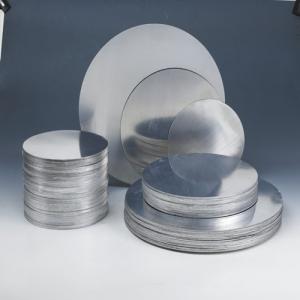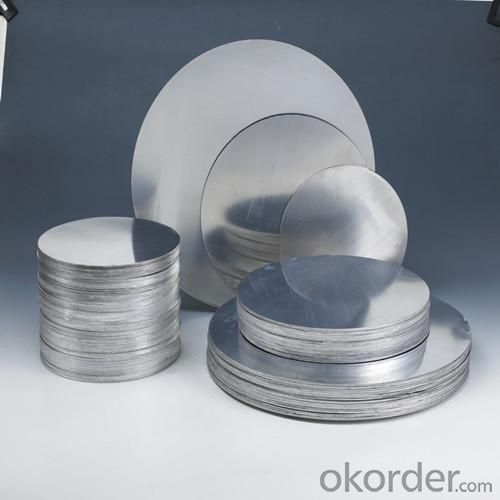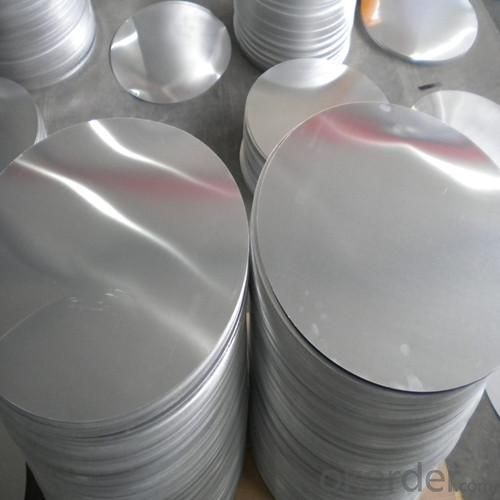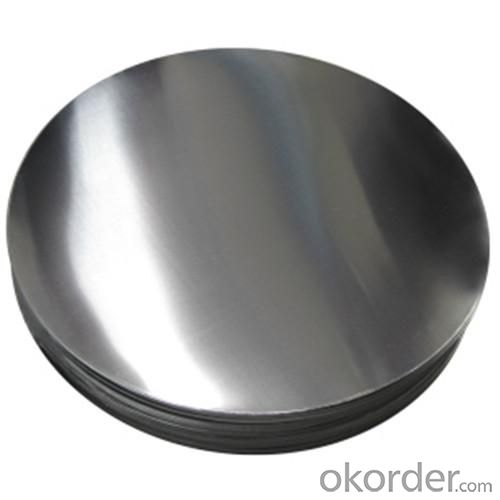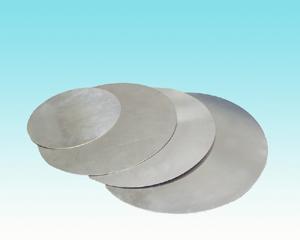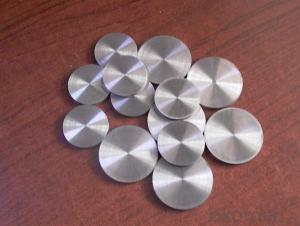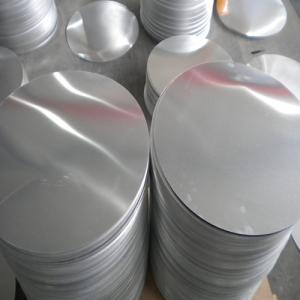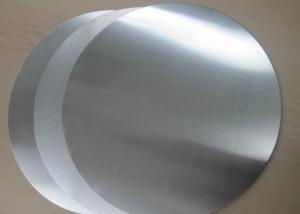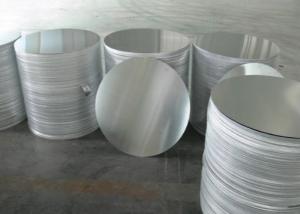Aluminum AA5052 Circles
- Loading Port:
- China Main Port
- Payment Terms:
- TT or LC
- Min Order Qty:
- -
- Supply Capability:
- 1000 Tons Per Month m.t./month
OKorder Service Pledge
OKorder Financial Service
You Might Also Like
1. Specifications of Aluminum Circle AA5052
|
Alloy Number |
5052 |
|
Temper |
H12, H14, H16, H18, H22, H24, H26, H32, HO, F |
|
Thickness |
0.50mm--6.00mm |
|
Diameter |
100mm--1200mm |
|
Standard |
GB/T3880-2006, ASTM, ISO, EU standard |
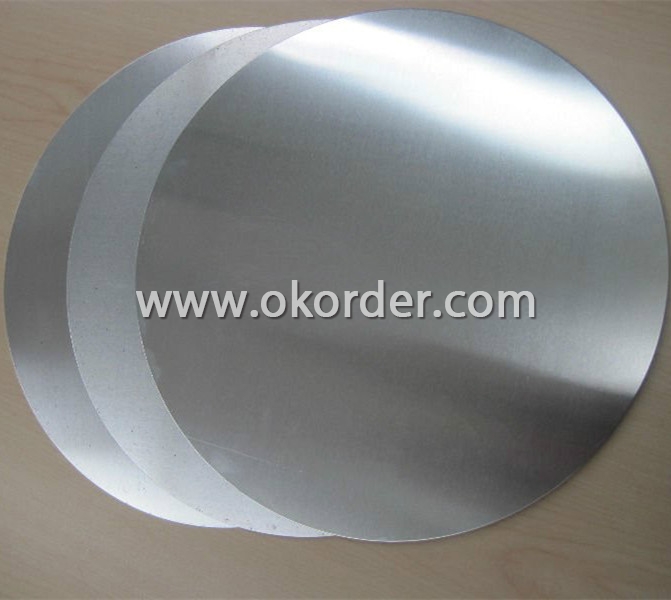
2. Usage/Applications of Aluminum Circle AA5052
Aluminum Circles have a wide variety of applications in cookware and kitchenware, including fried pans and pressure cooker. C.C. circle is excellent for spinning, deep-drawing (depth less than 10 cm), color or non-sticky painting with quite competitive price.
3. Packaging & Delivery of Aluminum Circle AA5052
Packaging: Seaworthy package, bubble plastic bag inside, anti-moisture paper wrapped outside, covered with cartons, on wooden pallets, in containers. Pallet weight: Max. 2.30 tons.
Shipment: the goods will be delivered in 40 days after getting the buyer's payment.
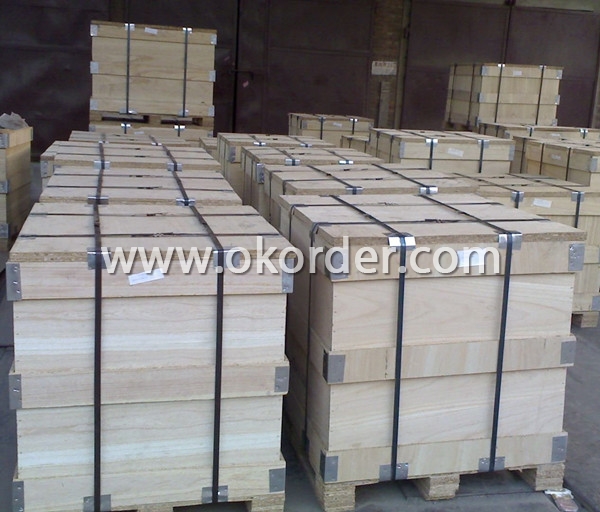
4. Production Flow of Aluminum Circle AA5052
Melting-Rolling- Cutting- Annealing--Packing
- Q: Is it safe and common to use aluminum for the production of containers for food and beverages?
- <p>Yes, aluminum is commonly used to make containers for food and beverages. It is lightweight, durable, and provides excellent resistance to corrosion. Aluminum cans are widely used for beverages like soda and beer, and aluminum foil is often used for food packaging. However, it's important to note that the interior of aluminum cans is usually lined with a protective coating to prevent direct contact with the food or drink, which can help to mitigate any potential health concerns related to aluminum exposure.</p>
- Q: What are some ways aluminum can be used for decoration purposes?
- <p>Aluminum is a versatile material with various decorative uses. It can be used in home furnishings, such as aluminum-framed furniture, mirrors, and lighting fixtures. In architecture, aluminum is utilized for window frames, doors, and decorative facades. Outdoors, aluminum is popular for garden furniture, sculptures, and railings. Its lightweight and corrosion-resistant properties make it ideal for decorative applications in both indoor and outdoor settings. Additionally, aluminum's malleability allows for intricate designs and shapes, making it a popular choice for decorative accents and ornaments.</p>
- Q: This question asks for methods to enhance the ability of aluminum to resist corrosion.
- <p>To improve the corrosion resistance of aluminum, several methods can be employed: 1) Anodizing: This process creates a protective oxide layer on the aluminum surface, enhancing its resistance to corrosion. 2) Coating: Applying protective coatings such as paints or polymers can prevent direct contact with corrosive substances. 3) Alloying: Adding elements like magnesium or copper to aluminum can create alloys with better corrosion resistance. 4) Cathodic Protection: Using sacrificial anodes can protect aluminum from corrosion by diverting corrosion to the anode. 5) Proper Design: Designing structures to minimize water and dirt accumulation can reduce corrosion. 6) Regular Maintenance: Cleaning and inspecting aluminum components can help identify and address corrosion issues early.</p>
- Q: This question asks for methods to prevent aluminum from seeping into food when cooking with aluminum cookware.
- <p>To prevent aluminum from leaching into food when using aluminum cookware, follow these guidelines: Avoid using aluminum cookware for acidic foods or beverages, as acids can cause aluminum to leach. Do not cook with high heat, as this can increase the risk of leaching. Use a protective coating, such as a non-stick coating or a thin layer of oil, to create a barrier between the food and the aluminum. Regularly replace or repair any damaged cookware to prevent exposure to bare aluminum. Finally, consider using alternative cookware materials, such as stainless steel or cast iron, for long-term cooking and storage.</p>
- Q: This question asks about the health effects of consuming aluminum on human health.
- <p>Aluminum consumption can have various effects on human health, though the extent of its impact is still a subject of debate among researchers. High levels of aluminum intake have been associated with neurological disorders, particularly Alzheimer's disease, although a direct causal link has not been definitively established. Aluminum can also interfere with bone health, potentially leading to osteoporosis, and may affect the kidneys, causing dysfunction. It is important to note that the human body naturally excretes aluminum, so moderate exposure is generally not harmful. However, excessive intake, especially over a long period, could pose health risks.</p>
- Q: What are some typical combinations of metals that are used to create aluminum alloys?
- <p>Common alloys used for aluminum include 1000 series, which are nearly pure aluminum. The 2000 series, which contains copper, is known for its strength. The 3000 series, with manganese, is good for its formability. The 5000 series, which contains magnesium, offers good strength and welding characteristics. The 6000 series, which includes silicon and magnesium, is known for its strength and resistance to corrosion. Lastly, the 7000 series, which contains zinc, is the strongest and most commonly used for structural applications. These alloys are chosen for their specific properties such as strength, corrosion resistance, and workability, depending on the application.</p>
- Q: This question asks about the potential health advantages of using food packaging materials that do not contain aluminum.
- <p>Yes, using aluminum-free food packaging materials can have several health benefits. Aluminum has been linked to potential health risks such as Alzheimer's disease, although the evidence is not conclusive. By eliminating aluminum, there is a reduced risk of exposure to this potentially harmful element. Additionally, aluminum-free packaging can be beneficial for individuals with allergies to aluminum. It also supports environmental sustainability as some aluminum-free alternatives are biodegradable, reducing the environmental impact of packaging waste. Overall, choosing aluminum-free packaging can contribute to a safer and healthier lifestyle.</p>
- Q: Is aluminum capable of functioning as a catalyst in chemical reactions?
- <p>Aluminum is not typically used as a catalyst in chemical reactions. Catalysts are substances that increase the rate of a chemical reaction without being consumed in the process. Aluminum, being a metal, does not have the properties necessary to act as a catalyst in most reactions. However, it can be used in certain reactions as a reducing agent or in the form of organoaluminum compounds, which may participate in catalytic processes, but these are not common applications.</p>
- Q: Describe the steps involved in recycling aluminum foil, including collection, sorting, processing, and manufacturing.
- <p>The process of recycling aluminum foil begins with collection, where used foil is gathered from households and businesses. It is then sorted to separate aluminum from other materials. The aluminum foil is shredded into small pieces and cleaned to remove any contaminants. This shredded material is melted in a furnace at high temperatures, turning it into molten aluminum. The molten aluminum is then cooled and rolled into sheets or ingots. Finally, these are used to manufacture new aluminum products, such as new foil, cans, or other items. This recycling process conserves resources, reduces energy consumption, and minimizes waste in landfills.</p>
- Q: Explain the relationship between aluminum and electrum, if any.
- <p>Aluminum and electrum are two distinct metals with no direct relationship. Aluminum is a lightweight, silvery-white metal that is the most abundant metallic element in the Earth's crust. It is known for its corrosion resistance and is widely used in various industries. Electrum, on the other hand, is a naturally occurring alloy of gold and silver, valued for its unique properties and historical significance. While both metals are used in various applications, they are chemically and physically different and do not have a direct connection.</p>
1. Manufacturer Overview
| Location | Henan, China |
| Year Established | 1995 |
| Annual Output Value | Above US$50 Million |
| Main Markets | Mid East;Eastern Europe;North America |
| Company Certifications | ISO 9001:2000;ISO 14001:2004;OHSAS 18001 |
2. Manufacturer Certificates
| a) Certification Name | |
| Range | |
| Reference | |
| Validity Period |
3. Manufacturer Capability
| a) Trade Capacity | |
| Nearest Port | Shanghai Port |
| Export Percentage | 30%-50% |
| No.of Employees in Trade Department | 21-50 People |
| Language Spoken: | English;Chinese |
| b) Factory Information | |
| Factory Size: | Above 100,000 square meters |
| No. of Production Lines | Above 10 |
| Contract Manufacturing | OEM Service Offered;Design Service Offered |
| Product Price Range | Average |
Send your message to us
Aluminum AA5052 Circles
- Loading Port:
- China Main Port
- Payment Terms:
- TT or LC
- Min Order Qty:
- -
- Supply Capability:
- 1000 Tons Per Month m.t./month
OKorder Service Pledge
OKorder Financial Service
Similar products
Hot products
Hot Searches
